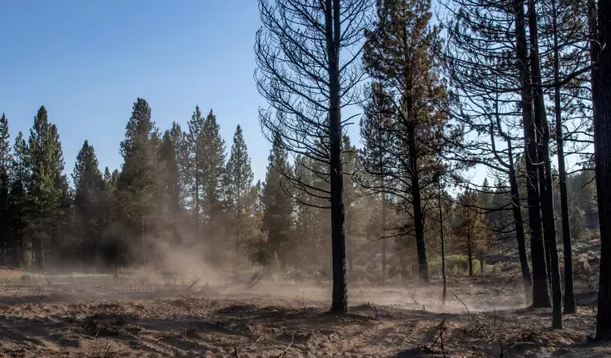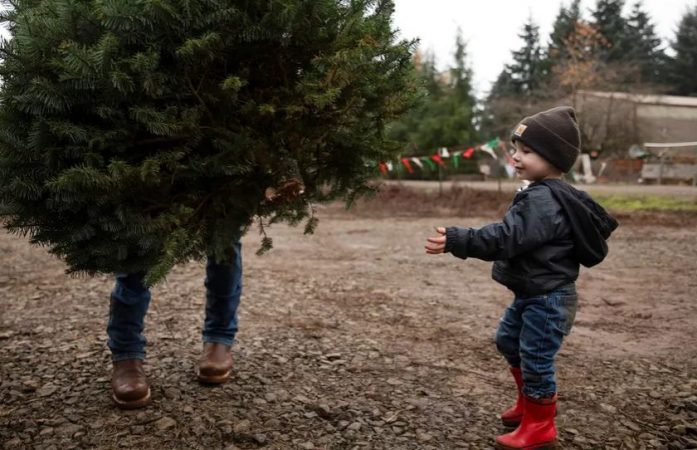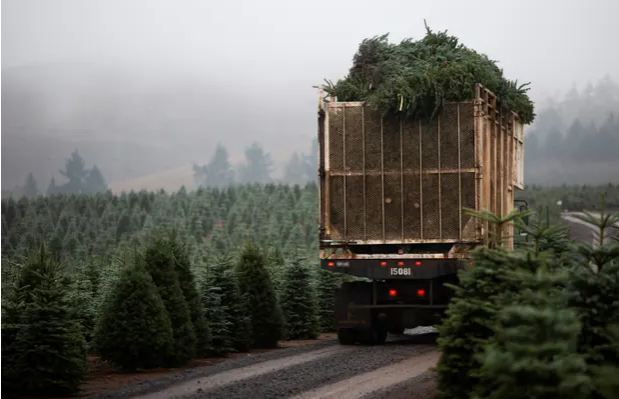[ad_1]
Farmers in Oregon, USA spent their worst summer, as heat, drought and extreme weather are threatening the industry.
Larry Ryerson, 78, woke up Sunday morning in late June in Medford, southern Oregon and found thousands of seedlings on his 10-acre Christmas tree farm, according to the Guardian.
Their bright green color was no longer after high temperatures.
“Just break your heart that comes out there and one day they are nice trees with fresh views and the next day, they are withered”, said Ryerson, who is a co-owner of the U Cut Christmas Tree.
Ryerson said he lost 4,500 trees and kept his store open for just three days this year due to shortages. His business, which has been around for nearly four decades, usually opens around Thanksgiving and continues to sell throughout the Christmas period.
“I am very sorry that many people come here year after year to get their tree, as we are one of the few remaining tree farms in the valley.He said.

Christmas tree farms across Oregon, the country’s largest producer of Christmas trees, have found themselves in an precarious position after a year of extreme weather.
A deadly “heat dome” hit the Pacific Northwest beginning in late June, breaking heat records in Oregon and the surrounding area, as a drought swept across the state for months.
The heat and drought are estimated to have wiped out millions of trees across the state, most of them seedlings, leaving farmers navigating the aftermath of what some describe as the worst summer in their memory.
And with climate change, this will not be the last year of extreme weather.
Now, some Christmas tree farmers across the state have begun taking steps to prepare for a future in which the climate may be much less hospitable to their industry.
Tom Norby, president of the Oregon Christmas Tree Growers Association and owner of the Trout Creek Tree farm, said such changes could include planting cover crops, or experimenting with growing more tree-resistant tree species.
Norby’s own farm suffered minimal losses last year, which he attributed to planting grass between each of his trees, which helped retain moisture in the ground and block heat.
But some changes may need to be more dramatic, such as planting months ago, or even relocating farms further north.

A devastating season
Last summer, it was the heat wave time that made it particularly deadly. It struck in early summer, just a few months after the seedlings were planted and exactly in the middle of the peak growing period of the harvest.
At the same time, prolonged periods of drought, which have become increasingly common in the region, are already making seedling survival a challenge.
Dana Furrow, co-owner of Furrow Farm in Hillsboro, Oregon, which includes an 80-acre Christmas tree farm, said that when temperatures rose in June, they had planted their seedlings just weeks ago, when the climate was already dry.
The result was that the farm lost thousands of seedlings, along with almost all the noble firs harvested and cut down.
“It definitely hurts because you have already put the cost of seedlings, work, time in the fields. “I want to say that it is a lot,” she said. “Christmas trees are a very hard-working culture. So you lose all that and you can not get it back “, She added.
It can take years to feel the damage from consumers
Overall, the impact on consumers has been quite small. Some businesses have set higher prices for their trees, while others have not been able to offer the variety of species they have had in recent years.
Norby estimated that inventory had dropped by 5% to 10% across the state, but clarified that there was no shortage of the Christmas tree.
“You want a Christmas tree, they are there”, he said.
“But, you know, here’s the thing, we have to embrace Christmas tree growers. And what you can get is a slightly damaged tree, you know, a tree that expresses some of the signs of this global warming event. ”
The real impact may not be felt for years to come, according to Chal Landgren, a Christmas tree specialist at Oregon State University. He cited the fact that most of the damage was to the seedlings, as Christmas trees take six to 10 years to mature.

“We will just have to look, you know, we will know when that date is approaching. But there will be such a gap from damage from this year, in eight years“, He said.
Ryerson has already started making changes to his farm in Medford, following the heat wave. In October, they planted a fresh bunch of seedlings, months earlier than normal, in the hope that rain would help their root system. He has also started looking around for extra nutrients that can help protect his crop.
But after destroying this year and looking at his house and some of his burned trees in 2019, those changes may just not be enough.
“If I have another year like this, I will probably have to get out of business,” he said, “just because you work so hard to raise them and all of a sudden they die.”
top channel
[ad_2]
Source link















